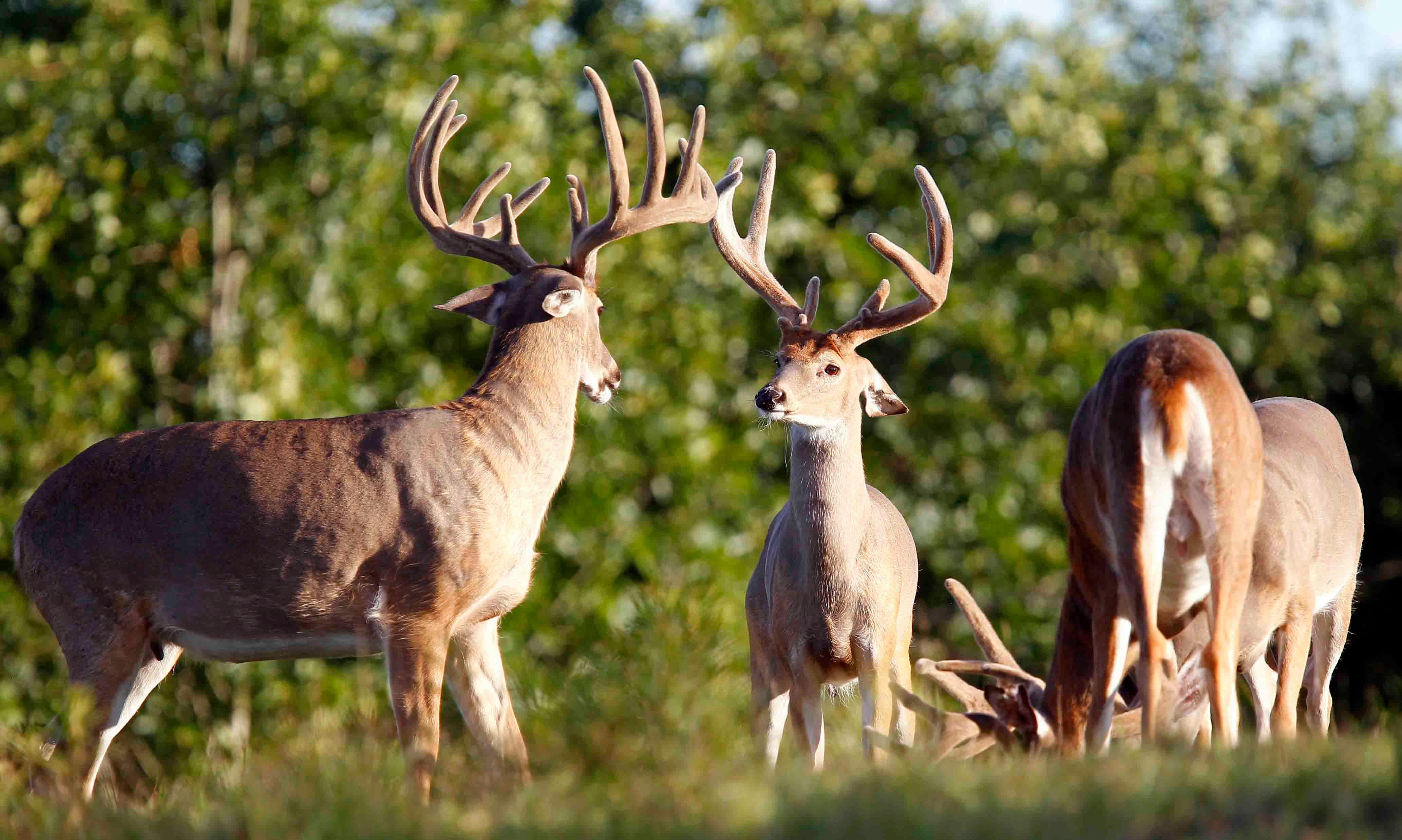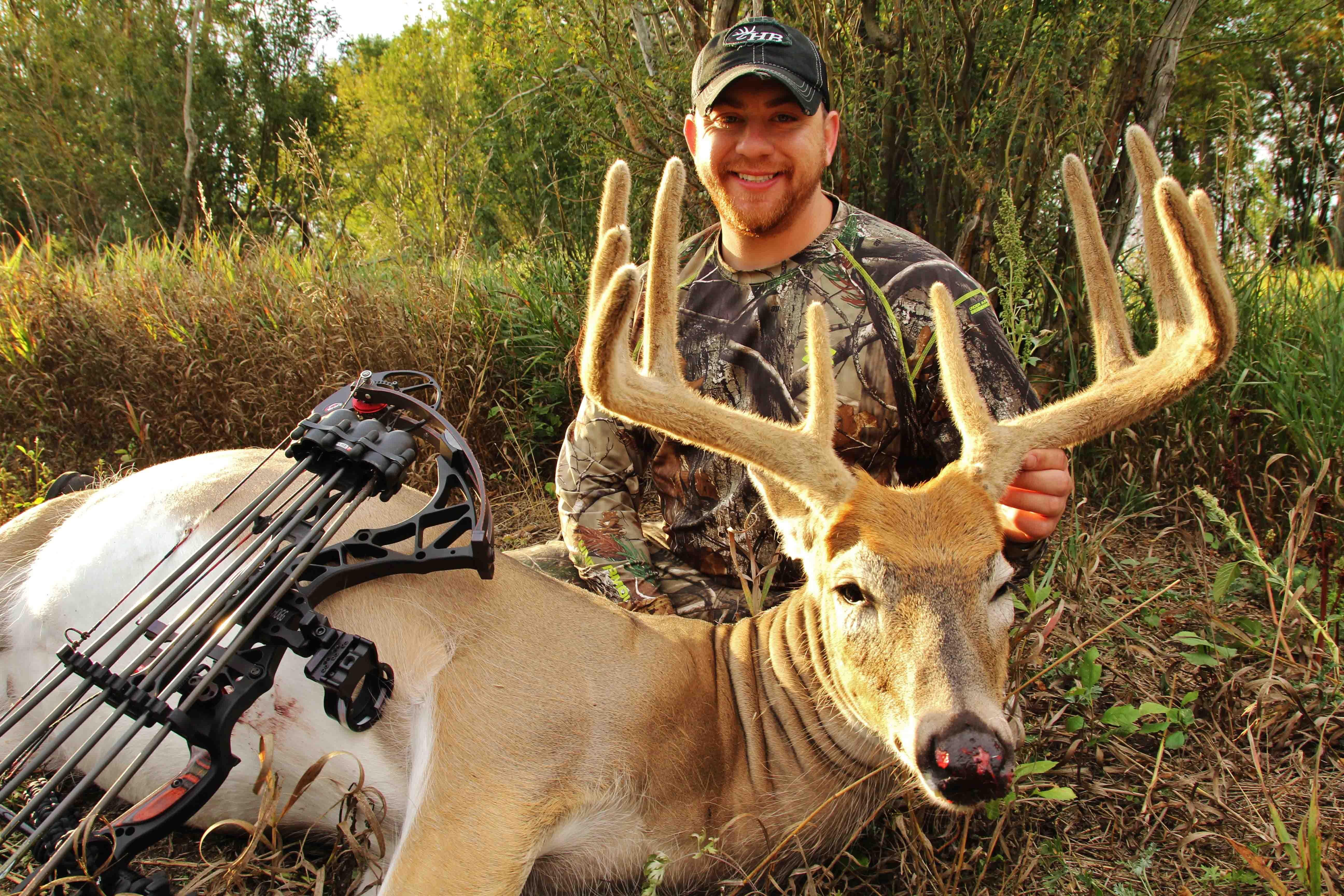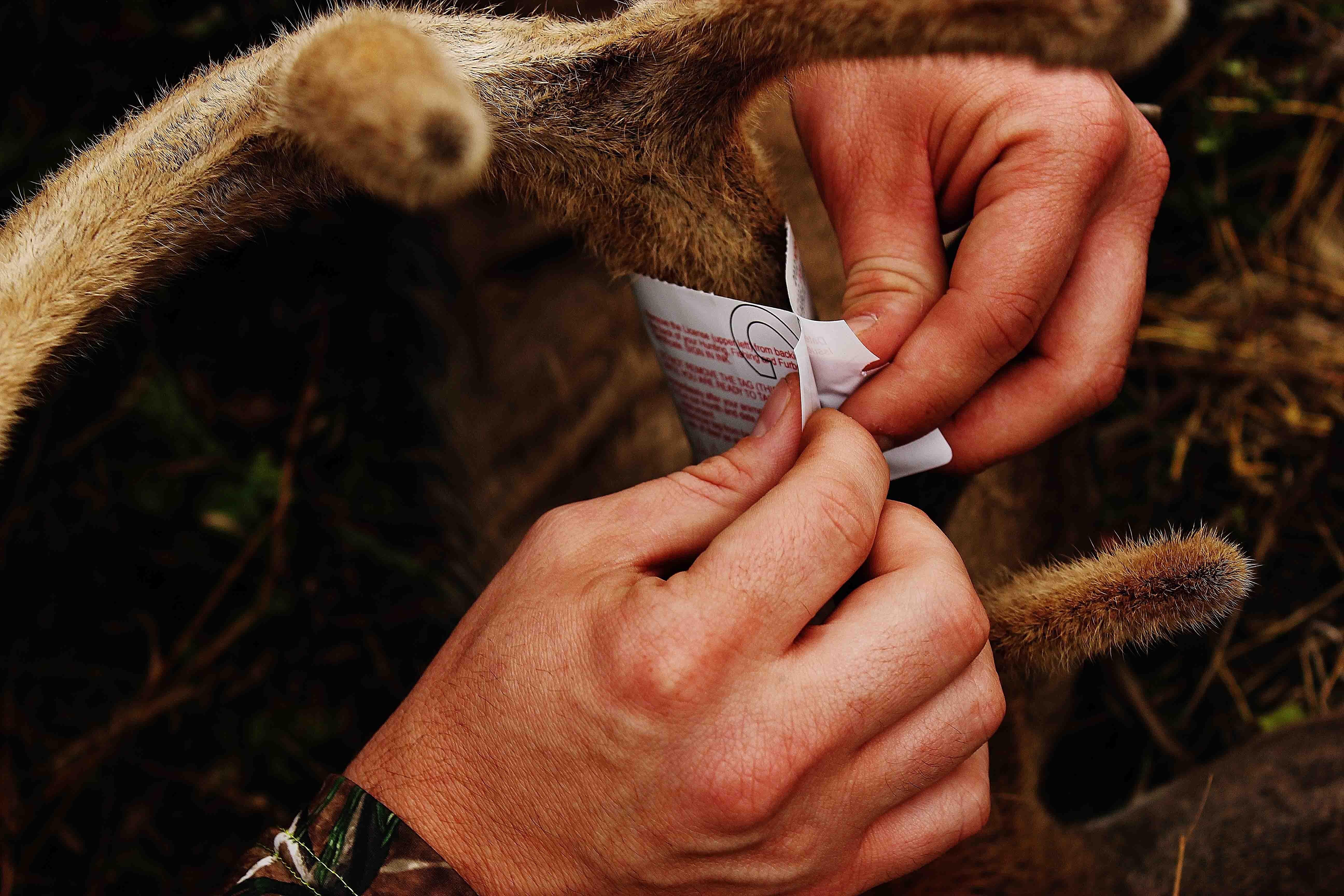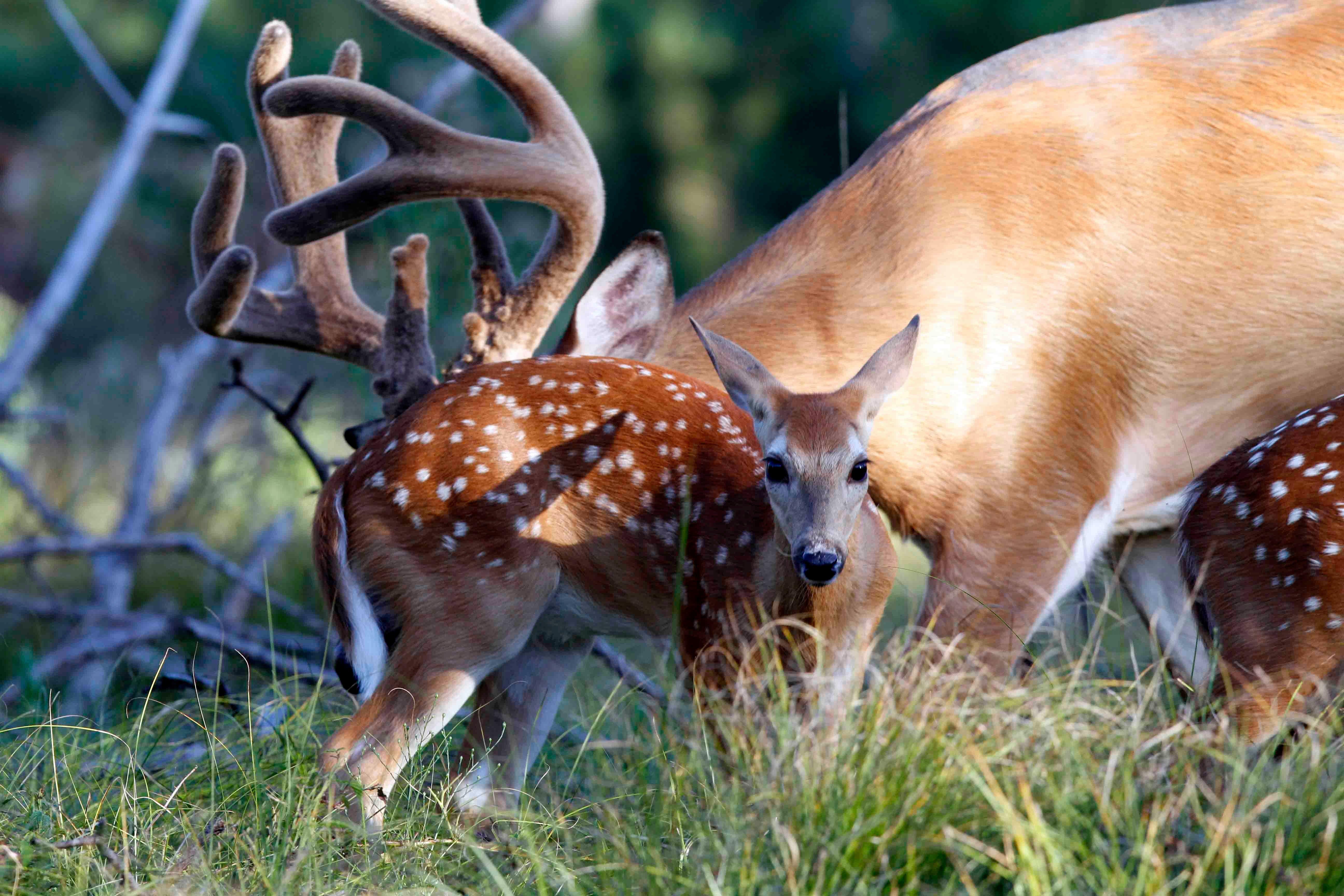There are a few locations where you can take advantage of a short window of opportunity to bag a unique trophy. Here's your DIY guide to finding a velvet buck.
Whitetail bucks may shed their velvet from late August through mid-September, but for most, the process occurs between Sept. 1 and Sept. 7. It's a short window, but if shooting a big velvet buck is on your bucket list, there are a handful of locations where you can pull off a do-it-yourself hunt, save a pile of money and have a legitimately good chance at killing a full-velvet trophy. Here are my top five picks.
Kentucky
Opener: First Saturday in September
License: OTC - $260
North Dakota
Opener: Noon on the Friday nearest September 1.
License: OTC - $270
Alberta
Opener: September 1
License: Hosted - $196.57
Wyoming
Opener: September 1
License: Apply between January 1and March 15 - $338.50
Montana
Opener: September 1
License: Apply between January 1and March 15 - $552
Washington
Opener: September 1
License: OTC - $434.30
North Dakota Public Land
North Dakota is a gold mine for the DIY bowhunter. Public land is abundant and there are still places where hunting permission will be granted on a handshake. Tens of thousands of acres of US Army Corps of Engineers (ACOE) land surrounds the Missouri River and its reservoirs, and all of them are open to public hunting. Much of it is grassland, but food plots, shelterbelts and oak groves left over from century-old farmsteads still attract whitetails.
Lake Sakakawea is a huge reservoir that's 125 miles long, and almost the entire shoreline of it is ACOE land. You could spend a lifetime poking around looking for whitetails. Much of the area has a very low human population with little hunting pressure during archery season.
North Dakota also offers a program known as PLOTS: Private Land Open to Sportsmen. Landowners allow public access to their land through this program, and the access is walk-in only. Most of this land is prairie-type habitat, but the hunter who does his homework can find pockets of great whitetail habitat that rarely get hunted. Because it is walking access only, anything that is a mile or so from the nearest road may never see a deer hunter, since most locals have a place to hunt where they don't have to hoof it so far. Surprisingly, few nonresident hunters take advantage of North Dakota's whitetail opportunities. You will have to work hard to bag a buck in North Dakota, but if you like the challenge of a DIY Road-trip, this could be the hunt for you.
A nonresident deer license is only $215. The archery season opens the Friday closest to Sept. 1 each year.
Check out the story of Ralph Cianciarulo's giant North Dakota buck.
Southeastern Montana / Northeastern Wyoming
While the Northeastern part of Montana gets a lot of whitetail hunting publicity, the Southeastern corner of the state has quietly been producing some really nice bucks. Because the Montana season opens Sept. 1, there is a short window of opportunity to bag a velvet buck. Northeastern Montana is slowly recovering from a crash in deer populations due to Blue Tongue, but the southeastern part of the state has so far escaped any significant outbreak.
Look to the lowlands along the Powder River and Tongue River watersheds for numbers of whitetails and surprising quality. This is arid country with river bottoms surrounded by sagebrush-covered hills. The deer bed in cottonwood groves and feed in irrigated alfalfa fields. Their patterns are very consistent and the sheer numbers of deer are striking. It is not unusual to see 50-plus deer per sitting. The first week in September one year I saw nine Pope & Young bucks in velvet during a four-hour evening sit in 90-degree heat.
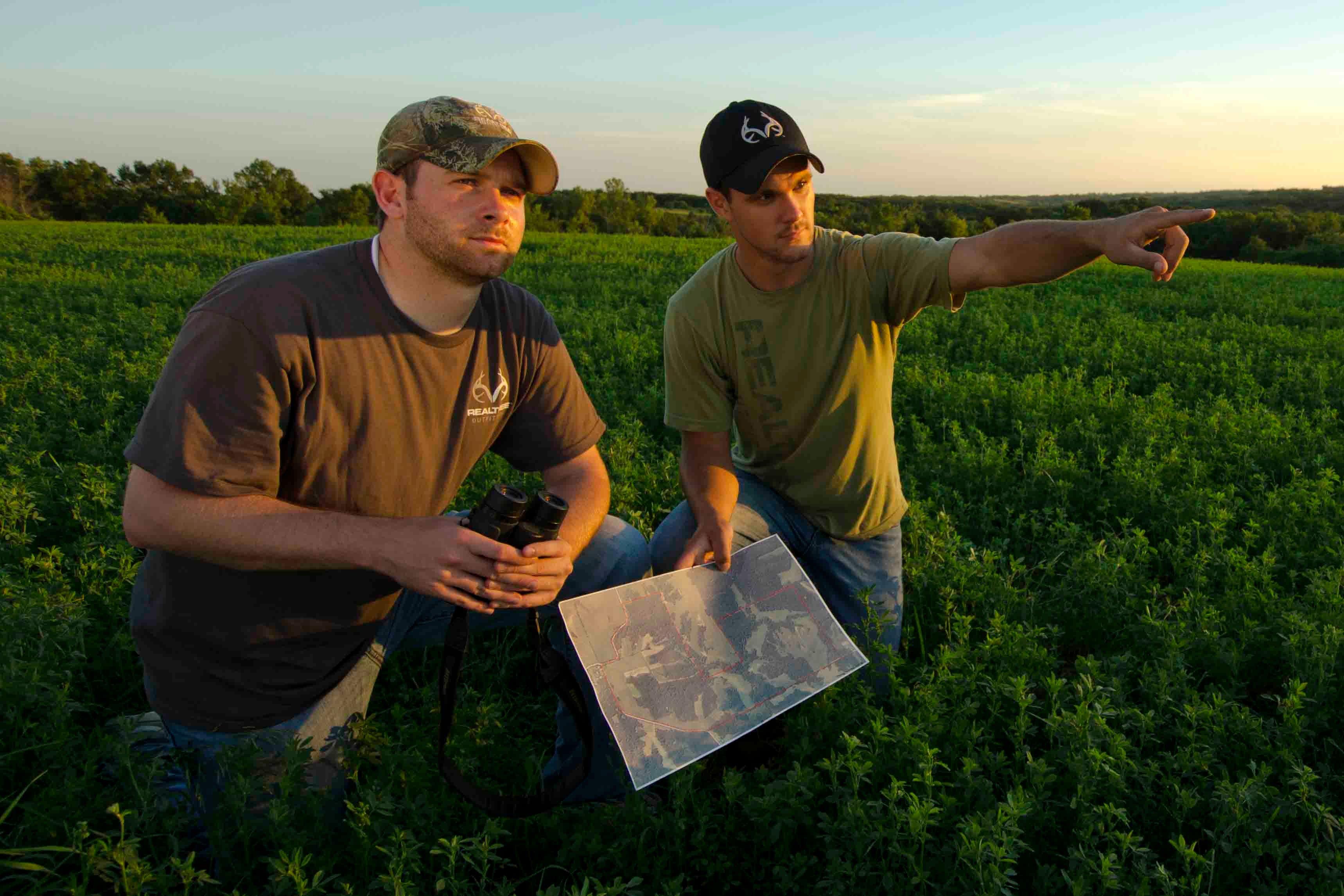
Montana is proud of its nonresident hunting tags. The tags and licenses will set you back $552 for the any-deer tag. This allows you to shoot a whitetail or a mule deer. You must apply by March 15, but for this area you will draw every other year and sometimes in consecutive years. You can spring for the more expensive Elk/Deer combo license which guarantees you a deer tag; then if you do not hunt elk you can apply for a refund of the elk portion of the tag.
Much like southeastern Montana, Northeastern Wyoming area in no way resembles typical whitetail country to the Midwestern or Eastern hunter. But the water and fertility of the land associated with the riparian areas produces whitetails in significant numbers, and the scarcity of local whitetail hunters allows them to mature. The whitetail hunting in this part of the state is no secret, so outfitters have grabbed up some of the best ground. Landowners who have not leased to outfitters often ask for a small trespass fee.
Like Montana, cottonwoods and alfalfa are the two main ingredients for finding whitetails in the early season, although the bedding areas may be in a pine grove a mile or more from the feeding areas. It is common for whitetails to cross large areas while they make their way to the fields to feed in the afternoon. This makes them highly visible. A spotting scope is an essential tool for locating them. Then it's simply a matter of intercepting their morning or evening treks that mostly take place during the first and last two hours of daylight.
Wyoming's archery deer season opens the first of September, but you must apply for your tag each year before March 15. Drawing odds are very good, and you will find a deer tag in your mailbox most years. Consider combining this hunt with an antelope hunt.
Check out this big velvet-buck success story from Wyoming.
Sidebar: Timing a Velvet Hunt
Bucks are shedding their velvet by the day after Sept. 1, which is also the start date for the archery season in many of these areas. Timing is important. Mike Zmek with Blue Rock Outfitters in Broadus, Montana says that the majority of the bucks in his area are hard-antlered by Sept. 7, and his hunters routinely see deer cleaning velvet from their antlers over the first week of the season. He encourages his hunters to arrive the day before the season so they can get in a treestand right away on opening morning. DIY hunters should arrive two or three days early to scout. And you can't waste time being too selective if a velvet trophy is truly your goal.
Fortunately, hunting during this short window not only provides a chance at a unique trophy, but it's also a time when big bucks are in some of their most consistent and predictable patterns of the year. They are focused on bedding, feeding, and not much else. And that makes your job that much easier.
Northeastern Washington
The whitetail population has exploded since the 1980s in the Evergreen State. The abundance of irrigated croplands is home to large numbers of animals, and quality bucks are quite common. Locals are much more focused on hunting mule deer.
The top counties are Chelan, Okanogan, Ferry, Stevens, Pend Orielle and Spokane. These counties have one thing in common that makes them home to large numbers of whitetails: The Columbia River and its tributaries. Water is the key, as whitetails use the bottomlands of the rivers and streams, which are home to large alfalfa fields and apple orchards.
Apple growers and deer do not mix, which can make acquiring permission to hunt very easy if you find yourself in the right place asking the right person. There are a few outfitters who have popped up but for the most part, it's overlooked as a whitetail destination. Some of the counties listed have abundant public hunting land, others very little.
For a game animal that is not revered, the tag prices are high because the state doesn't differentiate between mule deer and whitetail deer when it comes to licensing. You can purchase a nonresident deer-only license over the counter for $434.30.
Forest Fringe Area of Alberta

The licenses and fees are very reasonable at $196.57, but the catch is that nonresident hunters must be hosted by an Alberta resident. Unless you have a friend or family member in Alberta that has access to good hunting land, you must go with an outfitter. One other option is to trade a trip. You might find an Alberta resident that would be willing to host you in exchange for a hunt in your home area.
Southern Alberta is prairie land, the North is boreal forest, and the western part of the state is mountainous. Nestled between those areas is the Forest Fringe, commonly called the Parkland by Alberta residents. This combination of farms, open prairie and patches of bush is where you will find the best early season hunting. The deer tend to bed in the heavy cover of the timber blocks and feed in the open fields. Whitetails are quite visible and patternable in this flat country. Whitetail numbers are not high here but the quality makes up for the lack of quantity.
Occasionally, bucks will bed for the day in open fields and can be taken by spotting them in the morning, watching them bed, then putting the sneak on them when they have settled in. This is not a high percentage tactic but it is exhilarating and it sure beats sitting around camp all day. Bagging a mature whitetail this way is one of the most rewarding feelings in deer hunting.
Check out the story of Tiffany Lakosky's giant full-velvet Alberta buck.
Western Kentucky
In the last two decades, the numbers of mature deer shot by residents and non-residents in Kentucky has been steadily rising. With an archery season opener that falls on the first Saturday in September, this Midwestern gem offers yet another opportunity to bag a great velvet buck, and licenses are over the counter. Though the cost went up this year, they're still reasonable at $260.
This area offers an abundance of public land open to hunting. Western Kentucky features two expansive public areas in the 100,000-acre Land Between the Lakes Wildlife Management Area, and the 65,000-acre Peabody Wildlife Management Area. In addition to that, there are several smaller WMAs ranging in size from less than 1,000 acres to more than 8,000 acres. The area is well populated and you will not be alone on this public hunting ground, but if you are willing to do your legwork--get a mile or more off the road--you will find minimal hunting pressure.
Patterning these big woods bucks in September is not nearly as easy compared to what you'll find out west. Much of the acorn crop is on the ground and natural foods are abundant and spread out across the landscape. This is often thick and occasionally steep country so you will need to work hard to get your buck, but if you have a good plan and execute it well with hard work and determination, you will see some great deer.
Check out this success story on an early season, full-velvet Kentucky buck.
(Bernie Barringer is a top authority on DIY bowhunting trips. Check out his book, The Freelance Bowhunter, available on Bowhuntingroad.com)


